Here in trail-blanketed Bellingham, Washington, nearly every car at the trailhead will have a familiar doohickey on its rear end. Well, any that don’t have tailgate pads that is. The doohickey is a shiny flat set of platforms with a particularly “engineered” appearance to them. Those are bike racks from 1UP USA, designed and manufactured in Wisconsin since 2001.
Unlike their competitors at Yakima, Thule, Rocky Mounts, and Saris, 1UP has put very little energy into marketing since their start. We rarely see their logo on team or event sponsorship lists, and you won’t find many advertisements for their racks at REI or in the pages of your favorite outdoorsy rag. So how did the direct-to-consumer rack brand build such a sizable cult following? We chatted with 1UP owner Robbie Lange to search for the secret in the brand’s sauce.
Read more: Flash or Function? The Kuat Piston Pro X Hitch Rack has Both [Review]

The company was started by an engineer named Cal who has since moved on. In the early 2000s 1UP also made a stationary bike that sold about as well as their racks, but once exercise bikes spun toward a fully digital interface in 2019 the company chose to focus on the rack side of things and let those stationary trainers go. Lange says “we’re not a software company, so we just kinda phased it out.”
The design patent that pushed 1Up to the fore was around the those two arms that hold the tires and don’t touch the frame. Until recently the patent on those parts held strong, and if you saw another rack that use this system it was because 1UP had been paid through a licensing agreement. The patent ran out in 2016, and we’re seeing more brands embrace the 1UP style, possibly with the hopes of getting some of that cult following over to their side of the trail.

Bike racks have to hold up to a smattering of abuses from the weight of bikes and force of turning or potholes as well as road grime and salt. 1UP was one of the first brands to offer a fat bike compatible rack, and those had to be extra stout to handle the harsh Wisconsin winters. On the rack’s known burliness, Lange said,”It’s kinda laughable. it’s always over-engineered. Overbuild everything. And that’s kind of in our DNA here; to make it more robust than anybody else can.”
The Wisconsin brand was also one of the first with a rack sturdy enough to holster the early 70-80lb e-bikes, and that need persists with folks wanting to haul more than one battery ride to the trail.
While not unique to 1UP, another cool element of most bike racks is that owners can order and replace broken parts from home. Companies typically make the bits that wear out or are frequently damaged for their older models. If you get rear ended with a 1UP rack on your car there’s a chance you can just replace the busted parts in your garage and keep the rest of the rack in use. In this way, the rack is truly an extension of the automobile, designed to be maintained over generations of driving.

Given the advantage of domestic sourcing, 1UP didn’t suffer the massive lead times brought on by shipping freezes and the recent boom in cycling. They did experience some challenges meeting the new demand, but they’re currently shipping orders within a week or less of purchase, which is far better than some companies have fared.
The company isn’t only doing well, but they recently purchased Bellingham-based Recon Racks this past fall, adding a vertical, hanging-style rack to their growing lineup. Lange says “it kind of times out right, with us being a little bit larger we could utilize our infrastructure a bit more and offer the Recon Rack. So we worked out a really good agreement to acquire Recon and it’s worked out really well.”
Those newly added racks hold between five and six bikes by the front tire in a vertical orientation, with a strap around the rear to prevent sway. With this addition, 1UP USA now has nearly all of the hitch-mounted rack options a mountain biker could want.
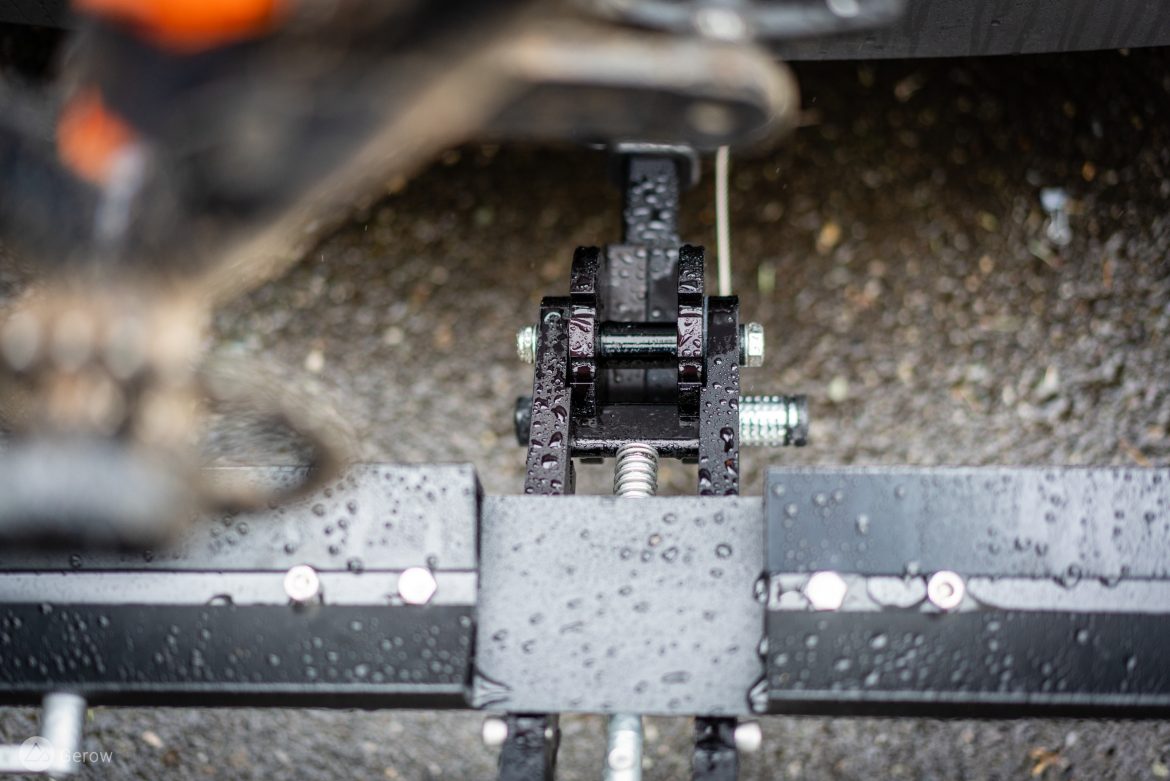
Now, welcome to that buried lede! Lange shared his perspective on how the brand managed to achieve such broad success with next-to-no marketing stories or campaigns.
“I think there’s a few things that lead to that. You’re right, our marketing budget has been pretty lean this entire time. Ultimately, the bike rack is a unique product, because it lives on the back of the vehicle. And with the cycling industry, a lot of people love looking at everybody else’s gear. So, at a popular trailhead you notice things that stand out, and our design looks so different than the imported stuff. There’s no plastic molded pieces. It sticks out like ‘did somebody make that in a garage?’ Then you get up to it and you’re like ‘ahh it’s a little more extravagant than that.’ I think that’s probably the main story. You don’t have to be marketed that much because the people who are using them are looking at everybody else’s stuff.
“And then, we’ve maintained a level of credibility. If something happens, we have a phone number with credible people on the lines here. Everyone works in-house and they always have, so they have a full understanding of the processes here. We’re not hiring out call centers or making you go through an FAQ. You can actually talk to somebody. I still actually answer the phones here from time to time. Pretty much every day when somebody goes to lunch.”

The fact that so many people have had 1UP racks for ten years or more, and want to share that story with their friends to make sure they make the right purchase; that’s also part of the 1UP success narrative. Word of mouth is definitely not dead. 1UP USA has some big plans to start supporting riders and events, doing a bit of that marketing they had overlooked in the past. We asked Lange what new gear we can expect from 1UP and, but he’s not so into the sneak peek mess. He said that any new products they release will be available when they’re launched, and will maintain the brand’s focus on durable functionality.














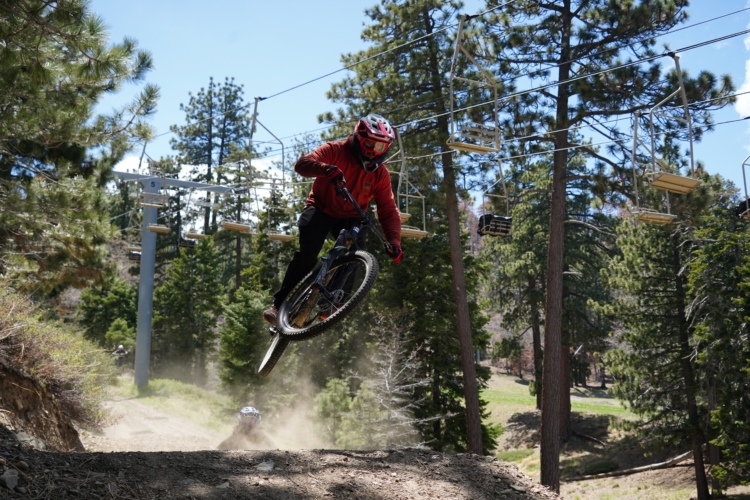
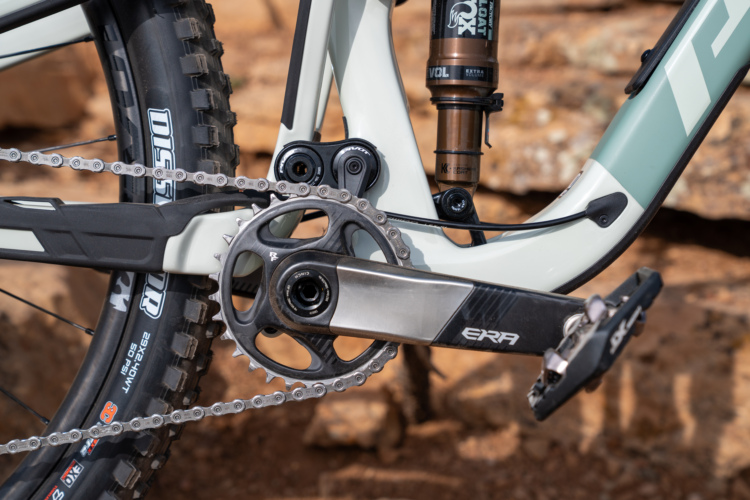
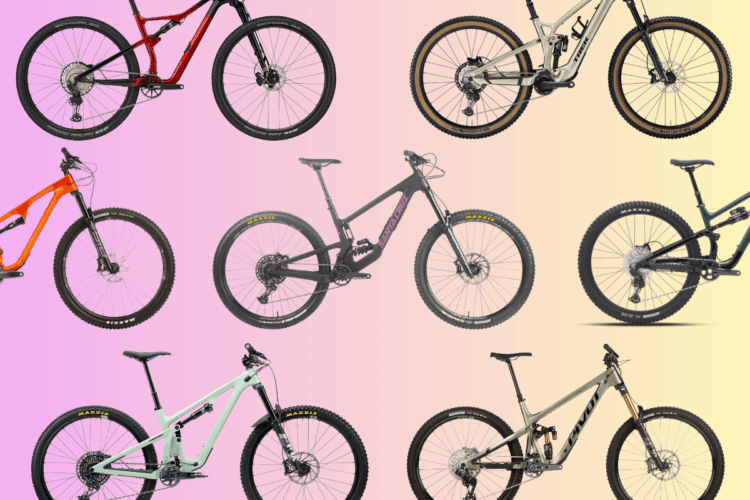
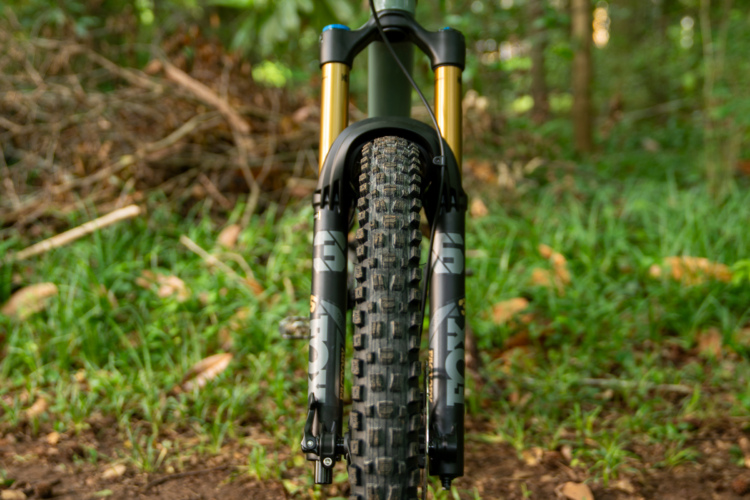

17 Comments
Mar 29, 2022
Mar 31, 2022
Mar 30, 2022
Mar 29, 2022
Apr 1, 2022
Mar 29, 2022
Mar 31, 2022
IMO, seems like a big omission to just gloss over a mention that Cal "has since moved on" and not mention anything at all about him starting up a new company (Quikr Stuff) with a new rack that supposedly improves upon the old design.
Mar 31, 2022
The Quickr story is also an important one, and it deserves to be told separately.
Mar 29, 2022
Mar 29, 2022
Oct 16, 2022
Mar 30, 2022
Feb 18, 2023
Mar 29, 2022
Mar 30, 2022
I had mine for 3 days and sold it because I couldn't get any help....
Sad.
Mar 3, 2024
Mar 31, 2022